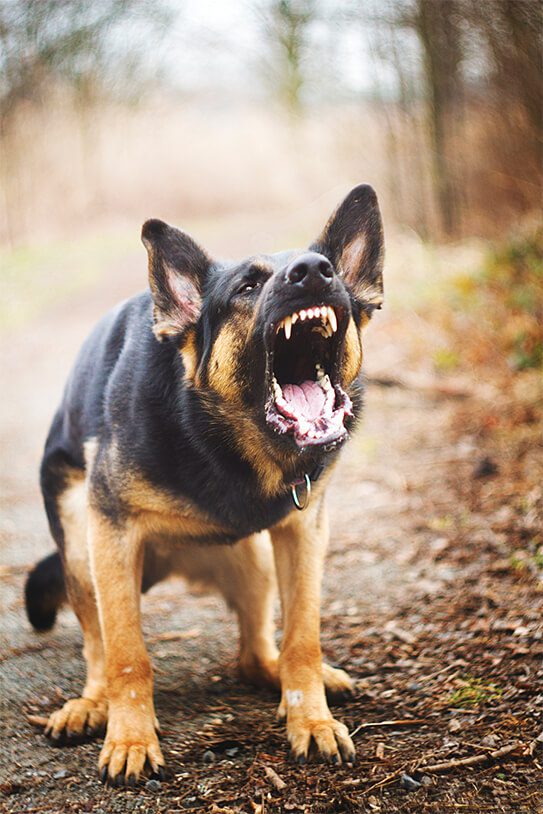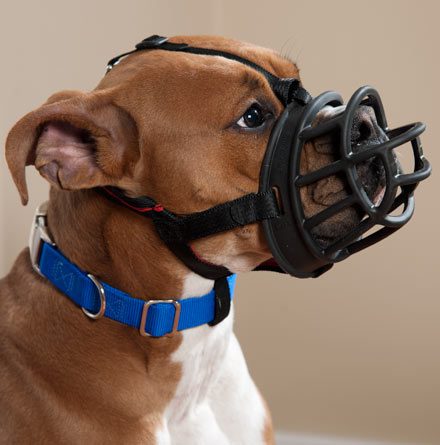We do dog aggression training regularly in Providence, Rhode Island, but before the client signs up, we always get asked, “Will my dog be like this forever?” The short answer is “There’s no way to know for sure.” It’s likely that your dog’s aggression is either manageable or fixable, but guarantees don’t exist in the dog world when it comes to serious behavioral issues.
Any dog trainer who gives you a guarantee before they’ve met you and started working with your dog is, unfortunately, lying to you. Although extremely rare, some dogs suffer from a condition called idiopathic aggression, more commonly referred to as rage syndrome. Think Cujo and the images that name conjures up. While it may seem extreme, dogs that suffer from rage syndrome can be that aggressive and that dangerous. In these cases, there is no known cause and the aggression occurs in intense, explosive outbursts. Owners tend to report the dog’s eyes glazing over, and they appear confused immediately after the episode. I mention this to point out that any trainer who, over the phone, tells you he/she can fix your dog’s aggression problem clearly doesn’t understand dog aggression.
However, because a condition like idiopathic aggression is so rare, it is likely that your dog’s aggression is either fixable or, at the very least, manageable. The only way to truly determine the level to which your dog can be rehabilitated is to begin the training process. At our Providence, RI location, we often see dogs fully rehabilitated through a combination of obedience training and desensitization. Basic obedience is the foundation that is required to do any sort of behavior modification training which seems logical: if I can’t get Cujo to listen to me when there are no distractions around, why would I expect him to listen when his aggression triggers are nearby? Therefore, you must first teach the dog to follow his commands in a distraction-free environment. Once he’s stable, now you can begin to add distractions. Our dog aggression training package is designed to do exactly that. We spend four weeks teaching the dog his basic obedience commands, and then we spend the next four weeks working with him around his triggers. In our experience, we’ve found that ninety-seven percent of dogs can be rehabilitated through this process. The large majority of those dogs can be fully off-leash in the real world around distractions, so there is most definitely hope for you and your pup!
So, what’s the first step?
If your dog is comfortable around you, we always suggest beginning the process of muzzle conditioning. I will go into the specific details of that process in another post, but for now, here’s a simplified explanation. When we muzzle condition dogs at our Providence, RI location, our goal is to get the dog to make a positive association with the muzzle. We want them to get excited when they see it and willingly stick their mouth into it? That sounds crazy, right? Why would a dog ever willingly put on a muzzle? They do it because they’ve come to realize that the muzzle means reward. We will only feed the dog his meals when the muzzle is around. Eventually, we build it to the point where the dog eats his full meal while wearing the muzzle. Therefore, it’s important to make sure you’re using a basket muzzle like the one pictured below. Stay away from the muzzles that force your dog to keep his mouth closed. Those muzzles can cause dogs to panic, hyperventilate, and/or overheat because they can’t breathe through their mouths and can’t cool themselves off by panting.
Once your dog has become muzzle conditioned, you can now safely work with him around his aggression triggers (i.e. other dogs, strangers, bike riders, skateboarders, etc.) Practicing his basic obedience commands-specifically commands that require stability like sit, place, and down. I say all of this with one strong caveat: your safest route is to do this with a dog training professional. I can’t tell you how many people have come to us having been bitten by their dogs while trying to fix their aggression problems. If you don’t know what you’re doing, this can obviously be a dangerous venture. If you are anxious or fearful during this process, your dog will pick up on that state of mind and likely project it back to you. Dog training is all about confidence and consistency, so if you want to try and solve this problem on your own, make sure to do your due diligence. Research techniques, watch videos and talk to people you know who have had to deal with similar issues. Find out what worked for them and, more importantly, what didn’t work. Understand that the rehabilitation process will take time and require patience. Don’t expect to be able to solve your dog’s problems overnight. Remember to remain calm, set consistent boundaries and expectations, and always follow through.
One last interesting tidbit: When the University of Córdoba performed a study on 711 dogs, they found that breed, gender, and whether or not the dog was intact, had little to do with aggressiveness. Instead, their findings concluded that aggression is predominately caused by people. They realized that typical breed and dominance factors have a minimal effect on aggression, and the owner’s actions or inactions are much more significant. Thus, if you were to get any breed of dog as a puppy, you could nearly guarantee he would not wind up aggressive if you properly socialized him, desensitized him, and trained him. This is why Breed Specific Legislation (BSL) makes absolutely no sense and is literally the equivalent of racism with humans, but that’s a topic for another day.
In terms of your dog’s aggression, if you choose to go the route of a professional dog trainer, make sure to find someone who has dealt with issues similar to the ones your dog has, and, above all, stays away from anyone who gives you a guarantee over the phone or at any point before he/she has begun working with your dog.
Warmest Wags and Woofs,
Mike







1 thought on “Can Dog Aggression be Fixed in Providence, RI?”
Comments are closed.